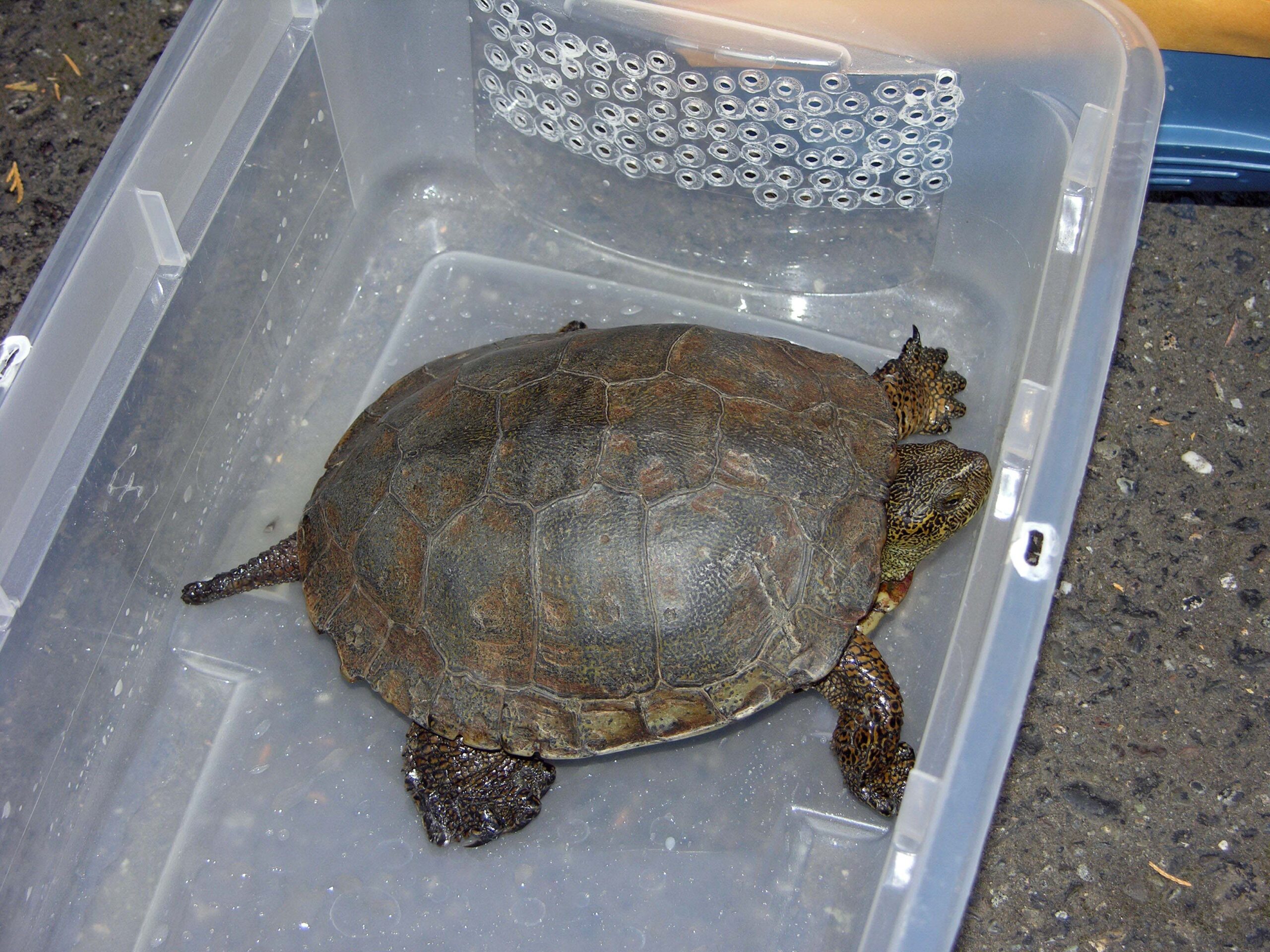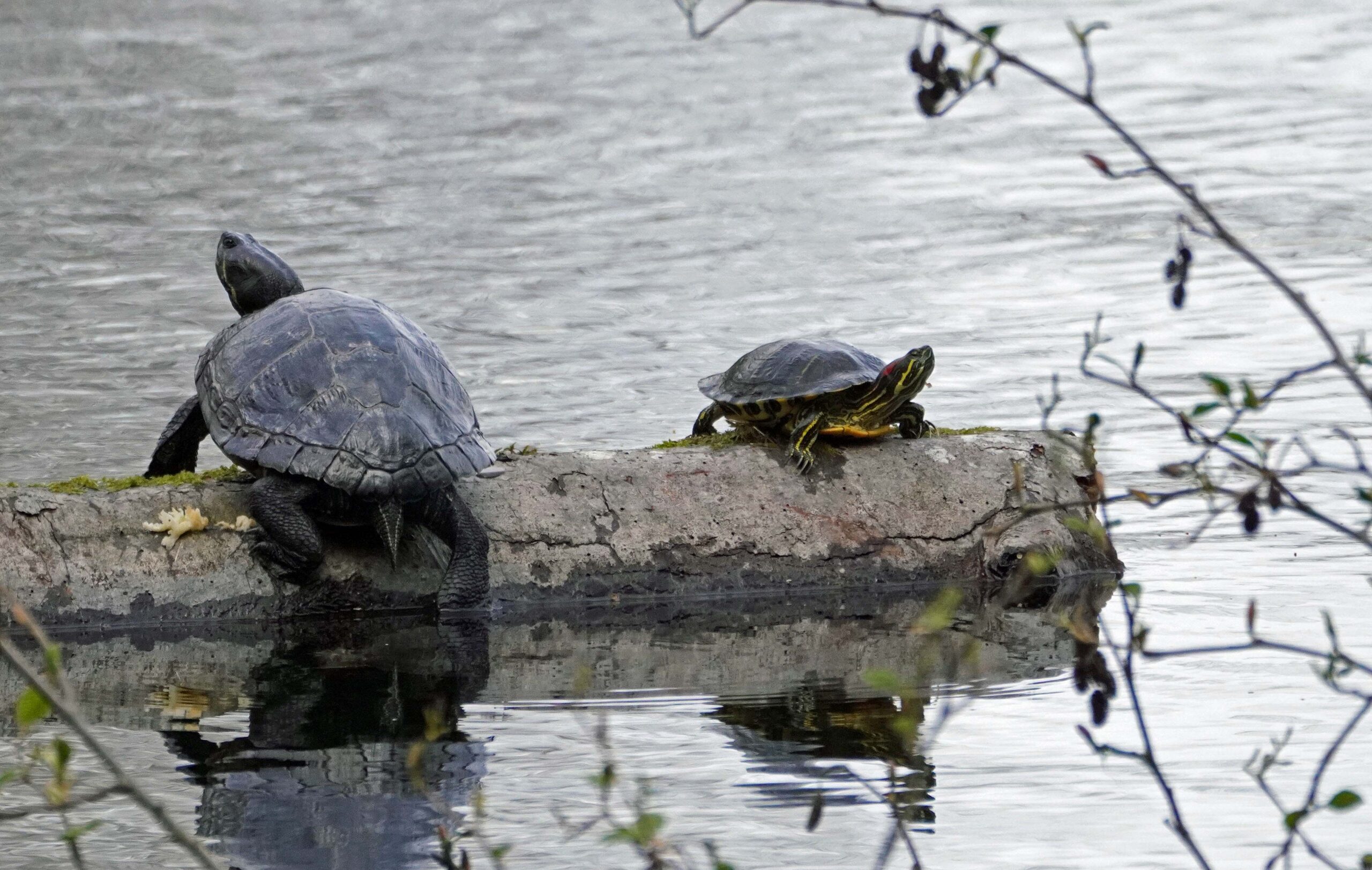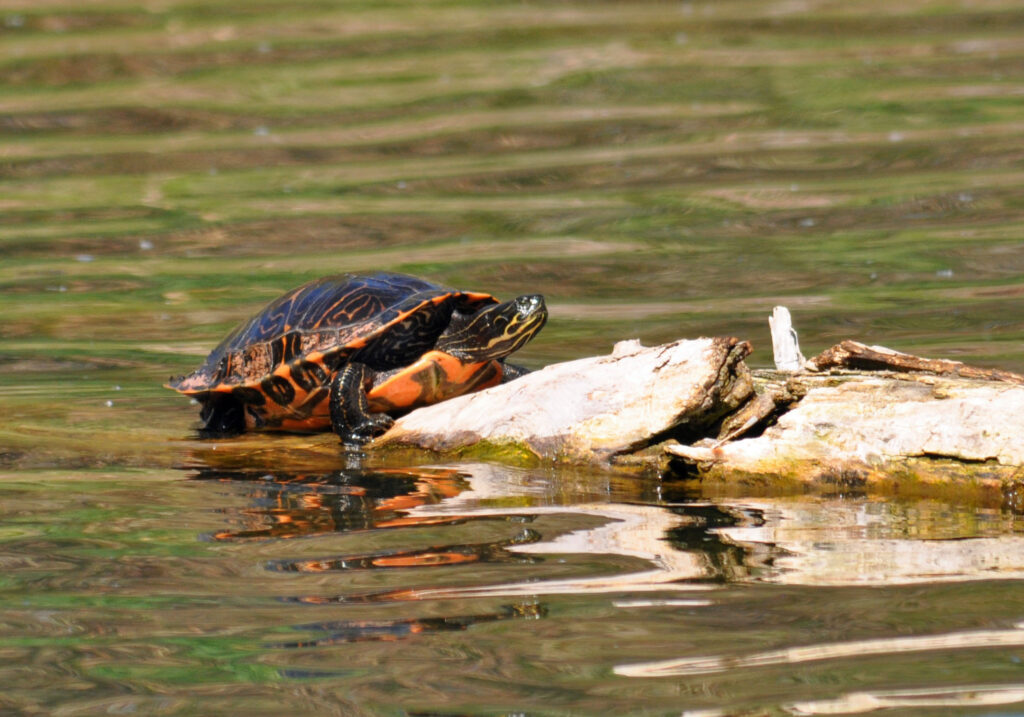The Western Pond Turtle was photographed at Northwest Trek Wildlife Park. I’ve not seen one in the wild yet. Next to it are a pair of sliders, also known as Red Eared Sliders. Looking at the picture it is obviously where that name common comes from. Then you have the very colorful Painted Turtle. That name comes from the brilliant ventral part of its shell. Notice also the much smoother texture of the dorsal part of the Painted Turtle shell compared to the others, and the reddish color that begins on the bottom part of the shell dorsal. Although I have read that snapping turtles have also “invaded” the Northwest, I’ve not yet found one.
Okay! Now that we are finally approaching some warmer weather here in the Northwest keep an eye out for the animal that is just about everyone’s favorite reptile – the turtle. Classified as the order Testudines, there are 12 families of them living in the world, 7 of which extend into Canada and the Unites States. Of these, however, just 2 species are native to our Northwestern states. A couple of others have been introduced; one of which is very likely to be seen. Unfortunately, one of our native species, the Western Pond Turtle, is the least likely to be observed. Reasons for this may be due to the invasive Testudines (Red Eared Slider and Snapping Turtle) and the expanding human population. In my experience this has not had much affect, however, on our native Painted Turtle. This species remain quite common in our ponds and lakes. But the turtle you will probably see the most of is the Slider. Like many other “invasive” species it is a very common pet shop pet. Over and over on Craiglist I see offers for these turtles. Growing up in New York I saw lots of sliders and I was quite surprised at how big they get, sprouting up shells well over one foot in diameter. This is probably the reason so many of them appear as free pets on Craglist. I don’t recommend taking one of these unless you have a very large aquarium or an outdoor pond with the muddy exterior they need for winter hibernation. No matter how common any of these reptiles are there is one thing to keep in mind when trying to observe or photograph them – they are extremely wary and often dive into the water when you are within fifty feet. All of the pictures I have achieved are due to the long range lens on my camera.
Comments, corrections, or recommendations? Please send to [email protected]
Thank You
<
>




Leave a Reply
You must be logged in to post a comment.